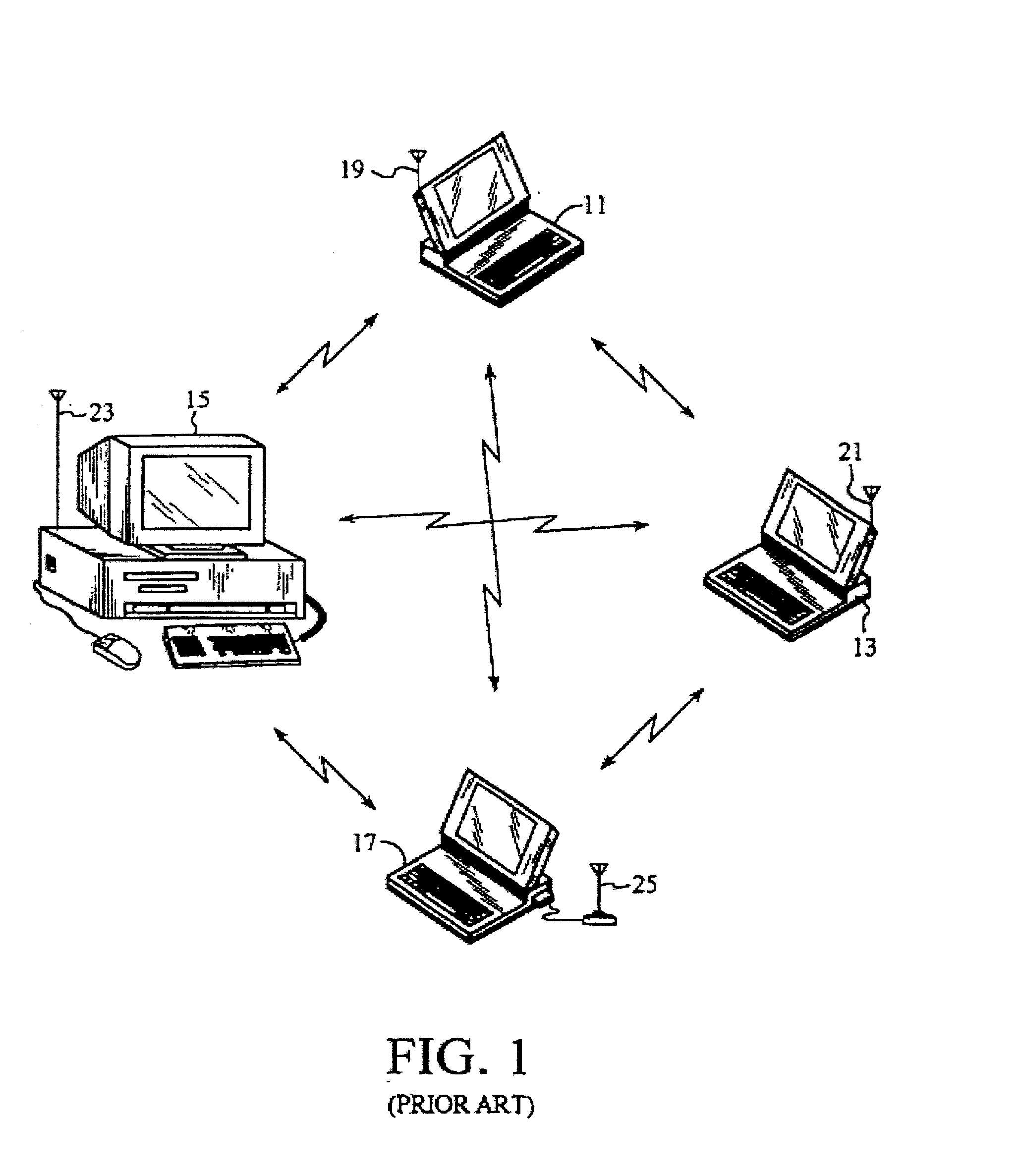Automated updating of access points in a distributed network
a distributed network and access point technology, applied in the field of distributed digital communication networks, can solve the problems of limited user mobility, limited network accessibility to the public, and difficulty in sharing an internet connection
- Summary
- Abstract
- Description
- Claims
- Application Information
AI Technical Summary
Problems solved by technology
Method used
Image
Examples
Embodiment Construction
[0043] In order to facilitate the use of the present invention, the best mode of a presently preferred exemplary embodiment makes use of existing hardware and software tools with minimal modification to both. As it is known in the art, network communication processes are divided into multiple standardized stages, or layers, and each layer is assigned a specific task necessary for network communication. A widely used network communication standard is the Open System Interconnection (OSI) standard developed by the International Standards Organization (ISO). The OSI communication model divides network communication into seven layers. Each layer has a predefined, standardized mechanism for communicating with the layer immediately above it and immediately below it. In this manner, any layer may be modified or optimized without requiring modification of any other layer as long as the same standardized mechanism is used to communicate with adjacent layers.
[0044] The first layer is the phys...
PUM
 Login to View More
Login to View More Abstract
Description
Claims
Application Information
 Login to View More
Login to View More - R&D
- Intellectual Property
- Life Sciences
- Materials
- Tech Scout
- Unparalleled Data Quality
- Higher Quality Content
- 60% Fewer Hallucinations
Browse by: Latest US Patents, China's latest patents, Technical Efficacy Thesaurus, Application Domain, Technology Topic, Popular Technical Reports.
© 2025 PatSnap. All rights reserved.Legal|Privacy policy|Modern Slavery Act Transparency Statement|Sitemap|About US| Contact US: help@patsnap.com



